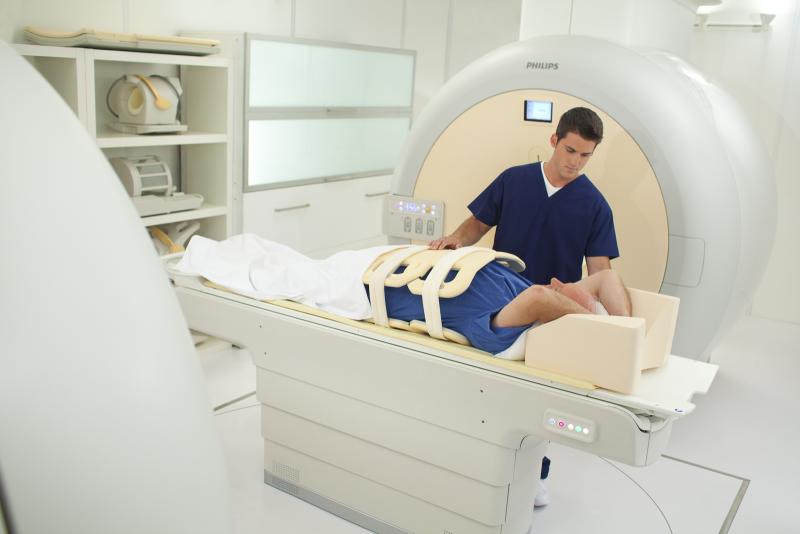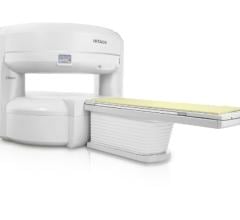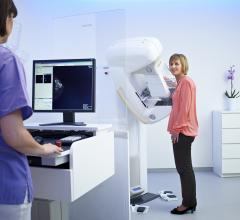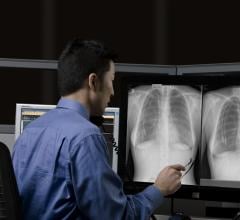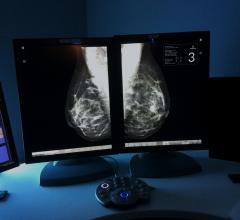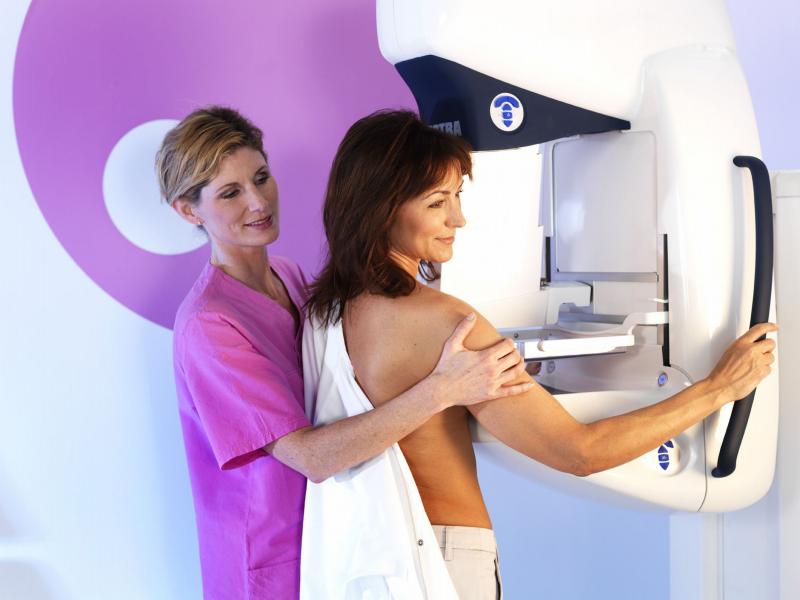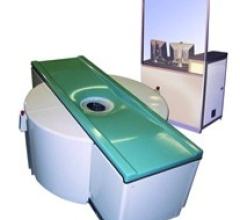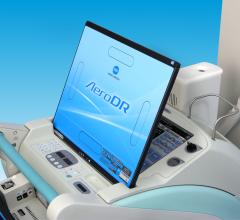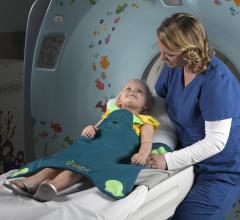Rajesh Kana, Ph.D., of the University of Alabama at Birmingham, and colleagues are the first to combine three different measures of the brain to distinguish people with autism spectrum disorder (ASD) from matched, typically developing peers.
A single scan could diagnose the cause of foot pain better and with less radiation exposure to the patient than other methods, according to a study in the March 2015 issue of The Journal of Nuclear Medicine. Imaging with 18F-fluoride positron emission tomography/magnetic resonance imaging (PET/MR), compared to 18F-fluoride positron emission tomography/computed topography (PET/CT), provides more diagnostic information with higher diagnostic certainty.
Providers can now meet Medicare quality reporting requirements to receive payment for computed tomography (CT) lung cancer screening by submitting data to the new Centers for Medicare & Medicaid Services (CMS)-approved American College of Radiology (ACR) Lung Cancer Screening Registry.
Radiology departments have many different needs and face a wide variety of challenges that can impact their departments ...
BC Technical, the nation's leading non-OEM provider of Medical Imaging Solutions, has acquired Eclipse Systems, a nuclear imaging service company providing systems, parts and customized service solutions. As part of their ongoing vision to provide the best, and most comprehensive service at an affordable rate, BC Technical continues to expand their reach and expertise. This strategic acquisition allows BC Technical to add valuable resources and knowledge in addition to strengthening their capabilities, specifically within Nuclear Medicine and Molecular Imaging.
The 25th annual Interdisciplinary Breast Center Conference (NCoBC 2015), sponsored by the National Consortium of Breast Centers (NCBC), will be held at Paris Las Vegas March 14-18, and will bring together medical and industry professionals from around the globe to network, learn, and share ideas, methodologies and treatment options that improve quality of care and outcomes for patients diagnosed with breast diseases.
The 25th annual Interdisciplinary Breast Center Conference (NCoBC 2015), sponsored by the National Consortium of Breast Centers (NCBC), will be held at Paris Las Vegas March 14-18, and will bring together medical and industry professionals from around the globe to network, learn, and share ideas, methodologies and treatment options that improve quality of care and outcomes for patients diagnosed with breast diseases. Some of the products that will be displayed are featured below.
Despite decades of progress in breast imaging, one challenge continues to test even the most skilled radiologists ...
Bracco Imaging, through its business unit Bracco Injeneering SA, announced the availability of its EmpowerCTA+, an advanced engineering contrast injection system.
Purview announced delivery of Purview ViTA, a secure Web-based patient consult platform. The platform provides a HIPAA-compliant, secure environment for quick and efficient sharing of complete patient medical records, including medical images, with experts at healthcare facilities across the world, without having to penetrate secure firewalls or other restrictive technology.
Established in 1999, NationalRad is one of the United States’ leading subspecialty diagnostic radiology practices. Based in south Florida, the organization’s staff comprises 25 highly qualified subspecialty radiologists, working mainly from home offices that are distributed across the country. Together, they provide over 100,000 subspecialty interpretations per year to approximately 125 clients.For NationalRad, being a distributed organization enables them to hire industry-leading radiologists, regardless of where they are located. It also enables them to provide a great deal of freedom to their team, who may have teaching obligations at universities, lecture at conferences around the country or simply prefer working at night.Given their distinct set-up, NationalRad has a unique IT architecture. As such, the organization has thrived since deploying IntelePACS in September 2013, experiencing a tremendous increase in productivity due to the solution’s ease of use, and the speed at which doctors can access studies and complete reports, from any location. “Since deploying IntelePACS across our organization, we’ve been able to increase our radiologists’ mobility, as they always have access to the same customized solution interfaces and viewer,” said Karen Jodat, chief operating officer at NationalRad.Using Intelerad’s InteleConnect Clinical Hub, NationalRad has also been able to improve their results distribution, as the solution allows them to push images and reports to referring physicians working in clinics, imaging centers or even a specific department within a hospital.Read More
Bayer Radiology’s Barbara Ruhland and Thom Kinst discuss how radiology departments can address the many different ...
Hitachi Medical Systems Europe announced the next generation of Oasis, the open high-field 1.2T magnetic resonance imaging (MRI) system, at ECR 2015. New features help to overcome obstacles and prevent delays while optimizing workflow management and costs. Easy patient access makes OASIS highly suitable for interventional procedures.
Royal Philips announced a collaboration with the University of California Irvine to explore how spectral breast imaging can improve breast density measurement, potentially aiding clinicians in more accurately gauging breast cancer risks and monitoring changes over time. The study will rely on Philips' MicroDose SI mammography spectral imaging technology.
The Centers for Medicare and Medicaid Services (CMS) has released the 2015 National Impact Assessment of Quality Measures Report (2015 Impact Report).
eHealth Saskatchewan plays a vital role in providing IT services to patients, health care providers, and partners such ...
A new, online report predicts where American hospitals will spend billions on healthcare technology in 2015, centering on ICD-10 migration and population health management solutions.
A new research technology was profiled during scientific sessions at the European Congress of Radiology (ECR) in Vienna, Austria. Densitas Research Edition assesses mammographic breast density using ‘for presentation’ digital mammography images.
More than any other debate about overdiagnosis, the discussion of breast cancer has spilt from the pages of the specialist medical press into the public domain, argues a public health expert in The BMJ this week.
The U.S. Food and Drug Administration (FDA) has granted pre-market approval (PMA) market clearance for the Koning Breast CT (KBCT 1000). It is a dedicated breast imaging system that acquires computed tomography (CT) images without compressing the breast. The KBCT produces 3-D images to aid in the diagnosis of breast cancer.
The presidents of the National Consortium of Breast Centers (NCBC) and American Society of Breast Disease (ASBD) announced the integration of the two organizations. The combined group will be known as the National Consortium of Breast Centers; however the ASBD name, identity and moniker will continue to be valued and will appear in most organizational communications.
Konica Minolta Medical Imaging and Shimadzu Medical Systems USA announced a new, integrated portable X-ray solution, the MobileArt Evolution EFX AeroDR-i. This portable solution is now available with a larger integrated console, and a 17-inch touchscreen monitor.
The International Lymphoma Radiation Oncology Group (ILROG) has issued a guideline outlining the use of 3-D computed tomography (CT)-based radiation therapy planning and volumetric image guidance for treatment of pediatric Hodgkin lymphoma. The goal of the new guideline is to reduce the radiation dose to normal tissue, thus decreasing the risk of late side effects.
The Centers for Medicare & Medicaid Services (CMS) is working closely with stakeholders across the healthcare industry to provide support in transitioning to version 10 of the International Classification of Diseases (ICD), including an online resource. CMS will officially transition from ICD-9 to ICD-10 on Oct. 1, 2015.


 March 09, 2015
March 09, 2015 
